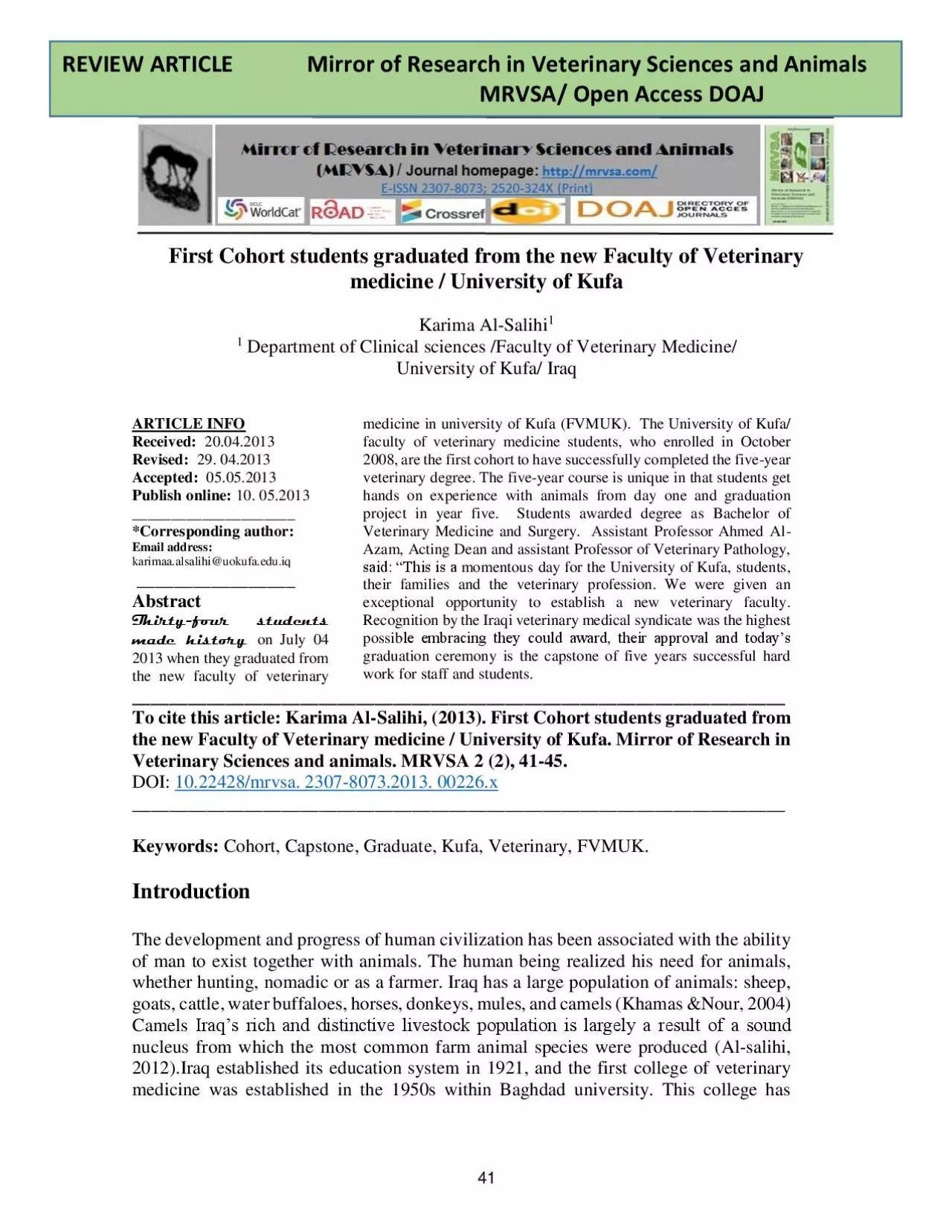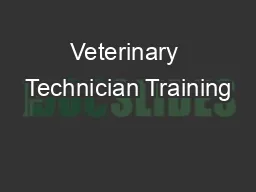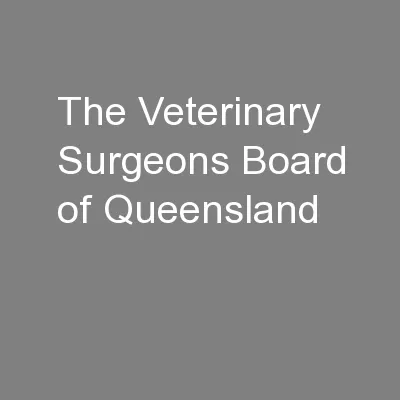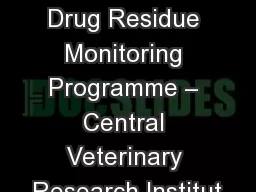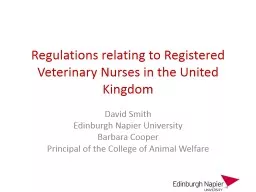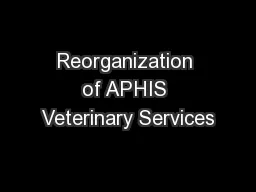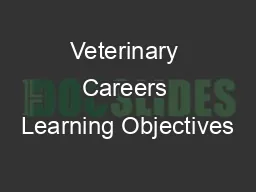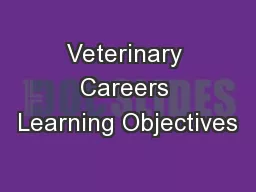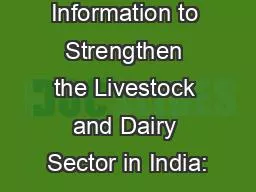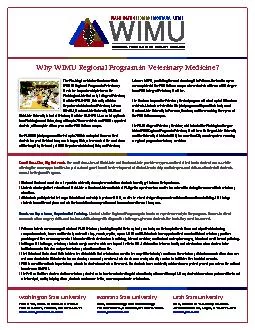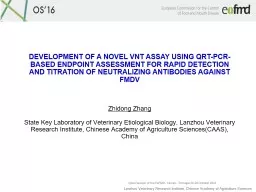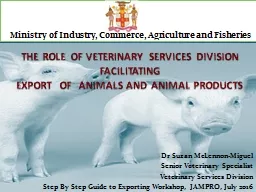PDF-Mirror of Research in Veterinary Sciences and Animals
Author : brianna | Published Date : 2021-01-05
Al Salihi 201 3 2 2 4 1 4 5 41 F irst Cohort students graduated from the new Faculty of Veterinary medicine University of Kufa Karima Al Salihi 1 1 Department
Presentation Embed Code
Download Presentation
Download Presentation The PPT/PDF document "Mirror of Research in Veterinary Science..." is the property of its rightful owner. Permission is granted to download and print the materials on this website for personal, non-commercial use only, and to display it on your personal computer provided you do not modify the materials and that you retain all copyright notices contained in the materials. By downloading content from our website, you accept the terms of this agreement.
Mirror of Research in Veterinary Sciences and Animals: Transcript
Download Rules Of Document
"Mirror of Research in Veterinary Sciences and Animals"The content belongs to its owner. You may download and print it for personal use, without modification, and keep all copyright notices. By downloading, you agree to these terms.
Related Documents

